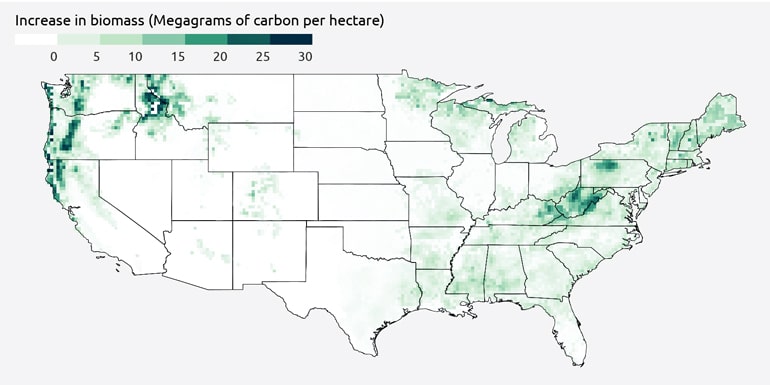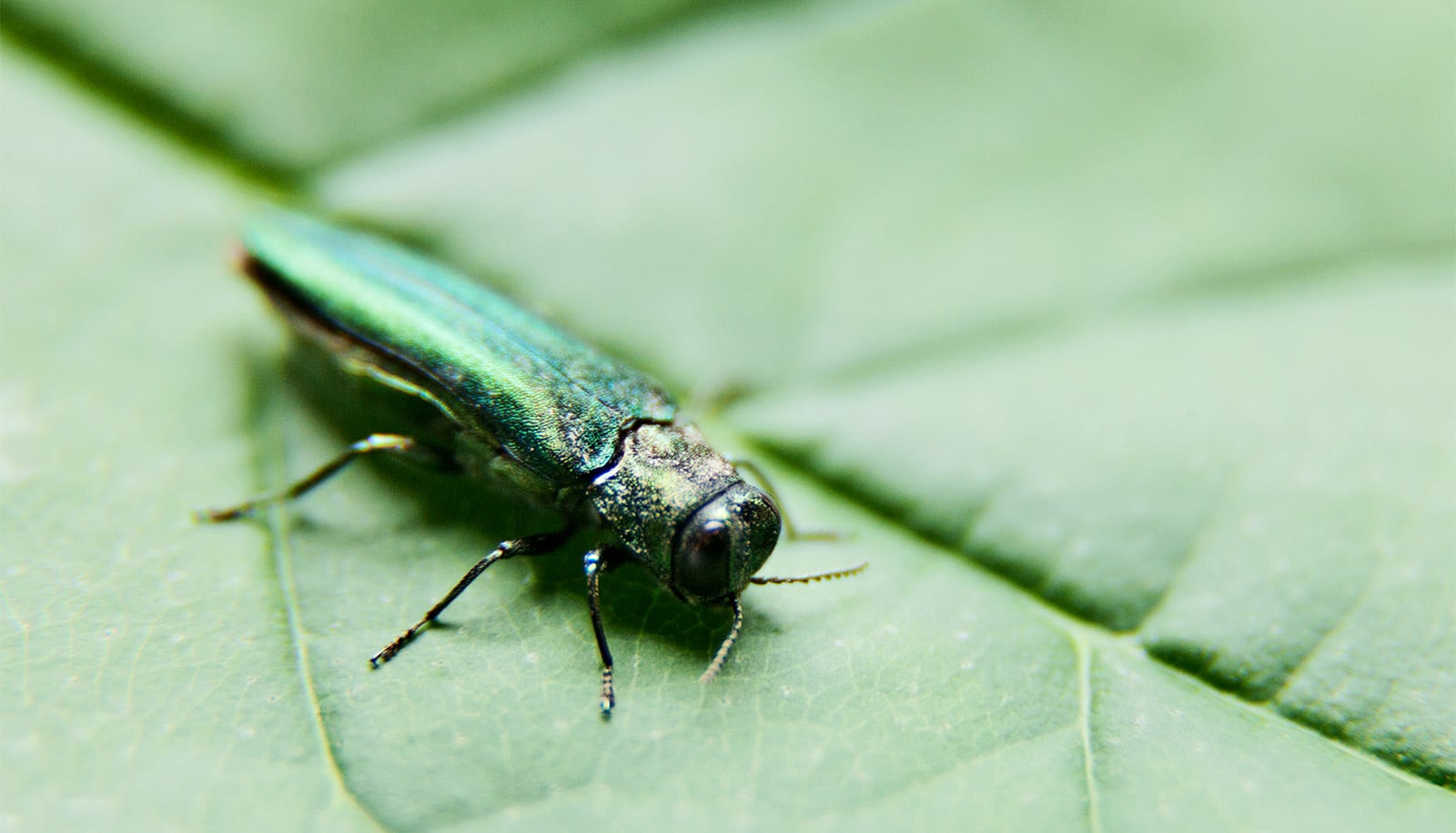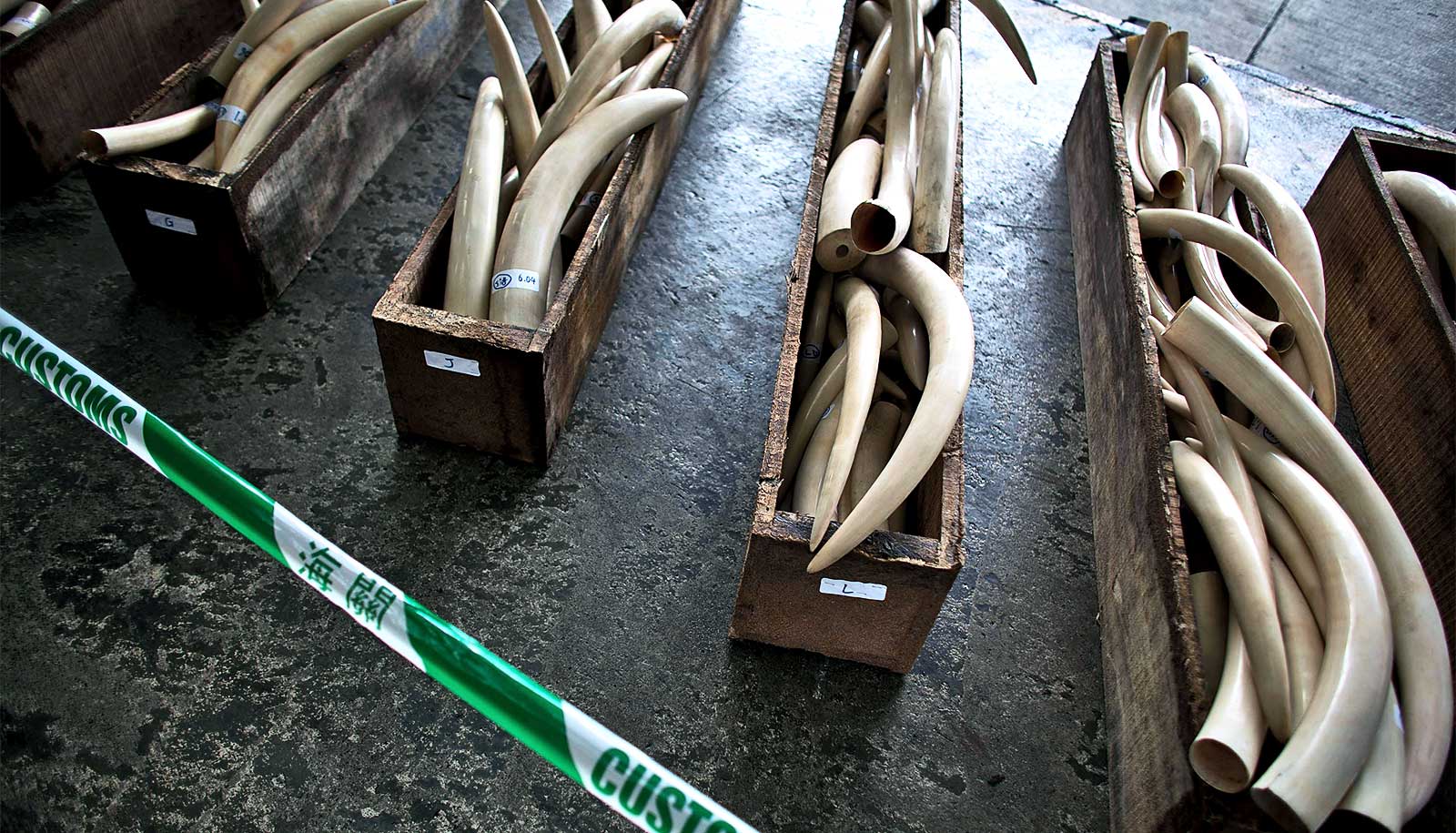There’s reason to hope trees will continue to suck up carbon dioxide at generous rates through at least the end of the century, according to new research.
The study warns, however, that trees can only absorb a fraction of carbon dioxide in the atmosphere and their ability to do so beyond 2100 is unclear.
Trees clean the air we breathe and slow the ravages of global warming by absorbing about a quarter of all human-caused carbon dioxide emissions. But this generosity likely can’t last forever in the face of unabated fossil fuel consumption and deforestation. Scientists have long wondered whether trees and plants could reach a breaking point and no longer adequately absorb carbon dioxide.
“Keeping fossil fuels in the ground is the best way to limit further warming,” says study lead author César Terrer, a postdoctoral scholar in earth system science in the School of Earth, Energy & Environmental Sciences at Stanford University. “But stopping deforestation and preserving forests so they can grow more is our next-best solution.”

A balanced diet for trees
Carbon dioxide—the dominant greenhouse gas warming the earth—is food for trees and plants. Combined with nutrients like nitrogen and phosphorus, it helps trees grow and thrive. But as carbon dioxide concentrations rise, trees will need extra nitrogen and phosphorus to balance their diet. The question of how much extra carbon dioxide trees can take up, given limitations of these other nutrients, is a critical uncertainty in predicting global warming.
“Planting or restoring trees is like putting money in the bank,” says coauthor Rob Jackson, a professor in earth system science. “Extra growth from carbon dioxide is the interest we gain on our balance. We need to know how high the interest rate will be on our carbon investment.”
Several individual experiments, such as fumigating forests with elevated levels of carbon dioxide and growing plants in gas-filled chambers, have provided critical data but no definitive answer globally. To more accurately predict the capacity of trees and plants to sequester carbon dioxide in the future, the researchers synthesized data from all elevated carbon dioxide experiments conducted so far—in grassland, shrubland, cropland, and forest systems—including ones the researchers directed.
Protecting forests to fight climate change
Using statistical methods, machine-learning, models, and satellite data, they quantified how much soil nutrients and climate factors limit the ability of plants and trees to absorb extra carbon dioxide. Based on global datasets of soil nutrients, they also mapped the potential of carbon dioxide to increase the amount and size of plants in the future, when atmospheric concentrations of the gas could double.
Their results show that carbon dioxide levels expected by the end of the century should increase plant biomass by 12%, enabling plants and trees to store more carbon dioxide—an amount equivalent to six years of current fossil fuel emissions.
The study highlights important partnerships trees forge with soil microbes and fungi to help them take up the extra nitrogen and phosphorus they need to balance their additional carbon dioxide intake. It also emphasizes the critical role of tropical forests, such as those in the Amazon, Congo, and Indonesia, as regions with the greatest potential to store additional carbon.
“We have already witnessed indiscriminate logging in pristine tropical forests, which are the largest reservoirs of biomass in the planet,” says Terrer, who also has a secondary affiliation with the Institut de Ciència i Tecnologia Ambientals, Universitat Autònoma de Barcelona. “We stand to lose a tremendously important tool to limit global warming.”
The research appears in Nature Climate Change.
This paper is a contribution to the Global Carbon Project. Additional coauthors are institutions around the world.
Funding came from the Natural Environment Research Council (UK), the Spanish Ministry of Science, the European Research Council, the Fund for Scientific Research-Flanders (Belgium), the US Department of Energy, NASA, the California Institute of Technology, and the Netherlands Organization for Scientific Research.
Source: Stanford University



